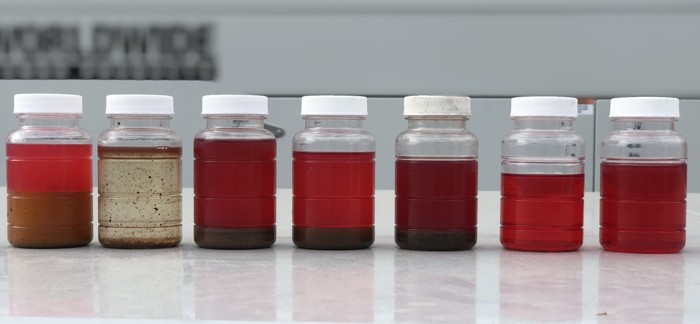Diesel Fuel Management for Standby Generators – Hows, Whats & Whys
Maintenance programs are a common and critical component for generators. The frequency and steps revolve around the type of generator, the use, and the environment in which it operates. In some cases, a simple visual monthly inspection is all that’s needed. Others require specific steps every two years. Most generators require maintenance in the bi-annual to annual range.
While generators themselves may receive required maintenance, diesel maintenance isn’t given much attention and isn’t always a part of a maintenance program. Yet, it’s critical to monitor and maintain the integrity of the fuel, especially when it is stored long-term. Because it’s not frequently monitored, it can become the biggest concern when an emergency power supply system is called upon.
It’s common for generator owners to check diesel off the to-do list once the tank is full. The problem is, the fuel itself has its own lifespan independent of other generator components. Quite often, this type of maintenance work isn’t handled by the most experienced team members, creating an increased likelihood that the key step of checking the fuel is overlooked.
When a problem occurs with the diesel fuel life cycle, it’s not commonly understood, and often left to experts to determine the underlying cause. The professional typically has to right the ship and mitigate risks. That moves more of the “problem” out of the hands of the maintenance staff and management, creating a higher risk for the problem to be overlooked later.
A simple mistake – such as ordering the wrong grade of diesel or not testing the quality and condition of the fuel when it arrives onsite – can cause numerous failures within the system, most of which are only partially understood by staff.
There’s also the mentality that once the fuel is purchased, it’s just left for when it’s needed and neglected until it is used. That’s when the problems arise. This type of neglect costs businesses money, in terms of lost productivity and repairs, and unreliability can do serious damage to a firm’s reputation. In critical systems, such as hospitals and data centers, such an outage can be a disaster.

Why Is Diesel Management Important for Standby Generators?
All generators require some level of diesel management. However, backups need more attention. Because they are not used as frequently, it is more common for the fuel to go bad. And, when standby generators are needed, there’s less room for error. Yet, some facility managers view just turning over the engine as a “good enough” test of the fuel itself.
It’s essential that this fuel is sampled, tested, and properly maintained to ensure the integrity remains the same. View the quality of the fuel as directly responsible for whether or not the diesel generator is reliable.
When Does Diesel Go Bad?
Why does diesel fuel go bad? Training team members on when and why this occurs can improve the odds of proper maintenance. Typically, this type of fuel should only be stored for 6 to 12 months. In the best conditions, it may be possible to maintain it slightly longer. To increase this length of time, the fuel must have been clean to start with, be kept cool at around 70 degrees Fahrenheit, be properly maintained, and be treated with stabilizers and biocides consistently.
When this does not happen, hydrolysis, microbial growth, and oxidation can occur, damaging the quality of the fuel. For example, when diesel is exposed to water, it causes a breakdown of the fuel. This includes condensation accumulation or drops of water hitting the surface of the fuel from the tank’s rooftop. Microbial growth creates acids that can degrade the fuel and restrict the flow of fluid as the tank clogs which will soon leave you looking for a new engine. And, finally, oxidation occurs as a chemical reaction when the fuel is in contact with oxygen. This exposure occurs immediately when the product leaves the refinery – the process can be slowed but not prevented. Oxidation can create high acid values, which can cause the build-up of sludge and sediment.
Signs Your Diesel Is Contaminated
Recognizing the importance of diesel monitoring, consider these common signs of when contamination has occurred:
- The fuel itself seems to be a darker color.
- There’s a smell that doesn’t seem normal or seems stronger.
- There is clogging occurring with the generator’s fuel lines, or a material seems to be backing up into them.
- There’s sediment forming at the bottom of the fuel storage tank.
- The output of the generator is not normal or drops. It can also be evident when the engine’s performance may not be reliable.
- The exhaust from the generator itself changes – generally becoming a darker color than it was. This occurs when the generator is operational.
- It becomes difficult to start the generator. It may seem as though the battery is failing or there is damage to the relays and electrical components of the system.
- Damage occurs to the fuel injectors or the pump.
How to Successfully Manage Your Diesel Fuel
You have three main options for managing diesel fuel.
The DIY Route
The first option is your do-it-yourself, in-house maintenance. Here some tips:
- Keep the tank fill areas dry and clean.
- Don’t rely on automatic tank gauging devices to verify the tank bottom water level.
- Make sure you use a storage tank that meets the UL-142 standard (or better UL-2085). A tank meeting these criteria will go a long way to safeguarding diesel from contamination.
- Ensure all tank openings have a strong seal to prevent contaminants from entering the tank.
- Keep all storage tanks as full as possible to minimize the amount of oxygen and water condensation possible.
- Keep systems as “water-free” as possible, with routine pumping to minimize as much as possible.
- Ensure all tanks have proper venting, but that vent caps themselves remain in good condition.
- Test for microbial activity. If present, take steps to correct the problem as soon as possible.
Outsource the Process
Though this may seem like a larger cost and a less-than-desirable option for some facilities, it also eliminates time constraints and ensures a better outcome. An outsourced company can handle every aspect of the process for you, minimizing not just whether or not it is done, but also the quality of workmanship. This includes everything from diesel fuel sampling to managing water, oxygen, and microbial risks. They can provide for ongoing maintenance for your system. The reliability of these systems is what makes them so important for most organizations.
Use a Diesel Fuel Management System
This third option provides a balance between manual labor and outsourcing. You can use a diesel fuel management system to automate much of the work for you on a remote basis. It works to check the fuel for you on a routine basis. It can provide you with real-time updates of the quality of the fuel at any given time. This is all managed through a web application. If and when there’s any indication of a drop in fuel quality, the sensors pick this up and send an alert, allowing for a fast solution to be determined. They can monitor fuel levels, water contamination, theft of fuel, temperature change, and much more.











